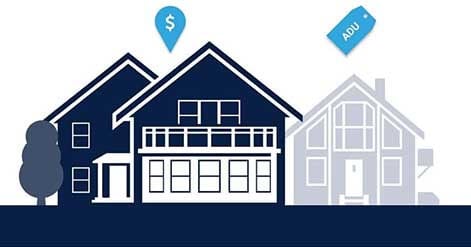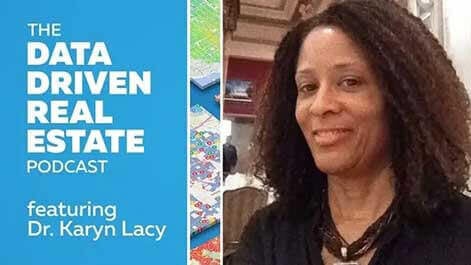Part 5 - Searching for solutions

Part five of a nine-part series.
Now that we've identified negative equity and the unprecedented burden of household debt as core issues in today's housing crisis, the next logical question has to be how we can resolve these issues. Below I’ll explore the solutions that have come to my attention and in the next post, I’ll provide my take on what we should do.
Solution: Get credit flowing again
Washington seems to be infatuated with the need to get credit flowing again. Having the credit markets freeze up in August of 2007 clearly caused considerable distress throughout the economy. But let's not lose sight of the reason why the credit markets froze: The realization that lenders had issued more credit than borrowers had the ability to repay. So while we certainly need functioning credit markets, let's be clear that more credit won’t solve the fundamental problem, which is that homeowners, corporations and governments are over-indebted.
Solution: Government job creation and other economic stimulus
The notion that we can spend our way out of debt is an idea only a politician could love. The willingness to trade tomorrow for today is the primary reason why we are facing trillions of dollars of negative homeowner equity, ballooning corporate liabilities and staggering government debt. By "trade tomorrow for today," I mean we too often take on debt that has to be repaid in the future and with interest, so we can live a little better today. Even if we used government stimulus to create jobs, that would help only to stabilize the economy, not bring back the peak home prices reached in 2006 or eliminate the negative equity that will continue to hinder sustainable growth.
Solution: Lower interest rates
The Federal Reserve has quite effectively used monetary policy to lower interest rates, which has helped to spur housing demand. Unfortunately, even with rates in the high 4-percent range, the current loan programs can't come close to restoring the purchasing power that was offered by stated-income, zero-downpayment payment-option adjustable-rate mortgages (ARMs) with low initial teaser rates. It would take 30-year fixed rates of around 1.5 percent to bring back home prices that were reached at the peak of the housing market.And why not lower interest rates to 1.5 percent? After all, we’ve made billions of dollars available to banks for less return and depositors can’t earn that much on bank accounts right now. But there are big problems with this approach: First, lower interest rates would mean higher home prices, and higher home prices would mean higher property taxes. Given that the loan payment would be the same either way, I’d rather pay a higher interest rate and lower property taxes because that way my total housing expense would be lower. Second, it's nearly impossible for people who live on a fixed income to survive when interest rates are as low as they already are. As huge numbers of Baby Boomers retire, low interest rate could become very costly because if those new retirees can't earn decent returns on their retirement savings, the burden of supporting them will shift to taxpayers. Third, if interest rates were later forced back up, home prices would fall accordingly and that would put us right back in the same situation we face today.
Solution: Payment-focused loan modifications
Loan modifications currently are the hands-down political-favorite solution at both the state and federal levels. But the primary problem with this solution is that nearly all of the loan modification programs to-date have focused on modifying the borrower's payments to affordable levels, rather than reducing the borrower's principal balance to eliminate his or her negative equity. The most stunning feature of these payment-based loan modifications is that they typically look like the worst-of-the-worst toxic loans in the sense that they feature ridiculously low payments upfront and interest rates that are adjusted to unaffordable levels in as few as five years. The notion that home prices and incomes will double in the next five years is ludicrous. But that is exactly what would be needed for most loan modifications to not end up back in foreclosure when the payments creep back up after five years. Until then, the homeowner is stuck in a prison of debt and unable to refinance the mortgage or sell the home. Moreover, many of these borrowers are likely to face foreclosure due to a job loss, transfer, illness, divorce or other life event.
Solution: Refinancing
Many people have suggested that we should simply refinance homeowners' toxic loans into traditional 30-year fixed-rate mortgages. The problem with this solution is that it doesn't deal with the reality that many of these borrowers are struggling to make the teaser-rate payments on a payment-option adjustable-rate mortgage so they certainly wouldn't be able to make the much higher payments on a 30-year fixed-rate mortgage. For refinancing to have even a small chance of success on a wide scale, interest rates would need to be in the 1-to-2 percent range and that would create its own set of problems.
Solution: Foreclosure moratoria
We’ve heard calls for foreclosure moratoria from all sides, including even the chairman of the U.S. Senate Financial Services Committee Barney Frank. Some people suggest that home prices will bounce back as fewer foreclosures come on the market and that that will eliminate the negative-equity problem. However, this thinking fails to recognize that buyers simply can’t afford to buy homes at the prices reached in 2006, unless lenders bring back the toxic loans that created this mess in the first place. Foreclosure moratoria can result in just one outcome: a temporary delay in the inevitable clearing of negative equity through foreclosure. That would ensure that the core problem would stay with us even longer.
Solution: Principal-balance loan modifications
Principal-balance loan modifications directly address the problem because they eliminate negative equity while allowing homeowners to stay in their home and return to normal consumption patterns. The problem is that these modifications will never happen if the choice is left to the banks alone. Banks actually might benefit if they reduced loan balances rather than foreclose because many homeowners would continue to make payments if their loan balance was marked down to the current value of their home or perhaps 90 percent of that value. Foreclosure, on the other hand, is likely to return only 60-to-70 percent of the home's current value after expenses. But while principal-balance loan modifications might sound like a smart approach for the banks, keep in mind that 20 percent of U.S. homeowners who have a mortgage are underwater while only about 8 percent of those who have a mortgage aren't making their payments. The last thing banks want to do is to offer borrowers principal-balance loan modifications because that would entice the 12 percent who are still making payments to come looking for such discounts too.
Solution: Bankruptcy cramdowns
We have seen multiple attempts to modify bankruptcy law to allow bankruptcy judges to modify mortgages. Given that bankruptcy judges can modify just about any other type of debt, it has always struck me as odd that this rule exists. Given that a bankruptcy judge can wipe out a corporation's responsibility to pay on it’s promises, it seems only reasonable that these judges also should be able to wipe out a little negative equity on behalf of individuals. That said, I’m not a huge fan of seeing $4 trillion in negative equity eliminated through the bankruptcy court. Having purchased property out of bankruptcy myself, I simply can’t imagine bankruptcy cramdowns as an effective solution to deal with a problem of this size.
Solution: Short sales
Like principal-balance loan modifications, short sales get to the heart of the problem by directly eliminating negative equity. The primary difference between this solution and several others is that with the short sale, the homeowner loses the home and won't be able to buy another one for two years under Fannie Mae's and Freddie Mac's current guidelines. Lenders have been downright awful about short sales to date, even though they're likely to recover more principal this way than if they foreclose on the loan.
Solution: Foreclosures
Foreclosures directly address the problem of negative equity as well, and they don't create any “moral hazard” since they are equally brutal to all involved. The homeowners' credit is ruined, they can't buy another home for at least 5 years and, in some cases, they remain liable for deficiencies. Lenders suffer higher costs and losses through foreclosure than through such other loss-mitigation methods as loan modifications and short sales. So while foreclosures certainly help to eliminate the core problem of negative equity, there are certainly less painful alternatives for all involved.
Solution: Home buyer incentives
Many people who take the simplistic view that real estate prices are a simple matter of supply and demand suggest that we can bring back higher prices by giving buyers incentives to increase demand. This view fails to take into account the distinction between what we want and what we can afford. Home prices have corrected by more than 50 percent in California not because people don’t want to own homes, but because they can’t afford them. The currently offered $8,000 tax credit doesn't change that fact. That said, I suggested a more radical way to create demand in October 2007, when I proposed that we should grant U.S. citizenship to foreigners who bought a home and made the payments for at least five years. An article in The Wall Street Journal made a similar suggestion just last month. In the end these demand creation concepts simply can’t overcome the general inability of the population to afford the prices reached at the peak – at least not without the help of toxic loans.
Solution: Debt jubilee
The concept of widespread debt forgiveness dates back to Biblical times and certainly would work to directly address the issue of negative equity by simply eliminating it across the board. The mechanics of how this massive debt relief would work are staggering, and it is nearly certain that lenders couldn’t bear the losses that would result alone.
Solution: Inflation
While inflation is rarely talked about as a “solution” to the negative equity problem, it certainly could be used to reduce debt. As prices and ultimately wages rise, debt becomes smaller as a percentage of income. And since home prices are a function of income, levels of inflation that are sufficient to increase income would certainly have a positive impact on prices. Still, having sufficient inflation to return prices to peak levels would be extremely painful as wages always inflate last. Plus, inflation would quickly result in higher interest rates and since home prices are also a function of loan terms, higher rates would push prices lower and that would offset the gains from higher wages in the near term.
Next: Perhaps my most controversial post of the series... Why homeowners deserve a bailout


